The struggles against the construction of the dam in the forest of Sivens, located in south western France, continues a long history of resistance against large-scale construction projects, ecological crimes and an arrogant government. It's connected to the struggle against the expansion of the military base on the Larzac plateau 40 years ago, as well as the current resistance centered around the ZAD (Zones A Défendre) against the construction of a major airport in Notre-Dame-des-Landes. The methods of resistance against the dam in Tarn, as well as the name ZAD du Testet are related to the militant defense of the ZAD in Notre-Dame-des-Landes. The government brought up a huge variety of repression methods which lead to the killing of activist Rémi Fraisse by a stun grenade on 26th of October, 2014.
The nation-wide riots in the aftermath brought the police actions to a sudden end. But afterwards right-wing paramilitary militias took over the assignment of suppressing the leftist activism. Ranging from non-police checkpoints on the streets of Tarn department to paramilitary raids on the ZAD carried out by not designated units - during some periods, some parts of the state monopoly on violence was executed by the militias in cooperation with the local prefecture and it's police forces. After a food embargo was imposed on the activists for ten days and carried out by the police forces, the right-wing farmers union FNSEA (English: National Federation of Agricultural Holders' Unions) and the paramilitary militias, the ZAD was evicted on the 6th of March, 2015.
Reservoir Dam: NON au barrage du Testet
The campaign against the dam project, now planned for 40 years, started in Tarn (south France) in October 2013. The reservoir dam in the Testet wetland is a project of the local general council, which is dominated by social democrats. The dam is supposed to retain the River Tescou and fill a water reservoir to be used to irrigate the monocultural maize-focused agroindustry located in the valley.
The project called “retenue SIVENS“ is planned to be built in center of the department Tarn, ten miles away from the town Galliac. The River Tescou should be impounded along the forest of Sivens up to the village of Barat. This would cause the flooding of a 48 hectares area, of which 29 hectares are classified as nature reserve. For the congestion the last important wetlands of the River Tescou and large forest areas were destroyed. The wetlands and the forest were very important for the local ecosystem. The area had the widest biodiversity found in the department Tarn and was the last habitat of many endangered species. Also, until the clearing, the air of the region was said to be very clean, because the wetlands filtered many pollutants.
The funding: Le prix du barrage
The dam is planned to hold one and a half million cubic meters of water, stretching over an area of 1.5 kilometers length, 230 meters width and 4 meters depth. It's estimated 8.4 million Euro are 100 percent tax-funded. The participants are the local general council Conseil Général du Tarn with 10%, the department Tarn-et-Garonne with 10% and the water agency Agence de l'Eau Adour-Garonne with 50%. The remaining 30% are funded by the European Agricultural Fund for Rural Development (EAFRD).
The idea of the dam was developed in the 70's. The construction is accomplished by the company Compagnie d’Aménagement des Coteaux de Gascogne (CACG). The contained water is supposed to serve the industrial agriculture, irrigating more than 300 hectares, to the benefit of 10-20 large regional farms.
Occupation: ZAD, deuxième épisode
In the years 2010 and 2011 several ecological activists and NGOs started public campaigns about the dam project. Activists with more offensive tactics in mind met in October 2013. They held an assembly at the future dam site and called their quickly founded collective Tant qu'il y aura des bouilles. They decided to continue the resistance on a different level by squatting the site. On October 23th an abandoned stone house was occupied: La Métairie neuve. In reference to the name of the protest sites against the airport in Notre-Dame-des-Landes, the area around the dam site was called “Zone a défendre“ (meaning: Zone to Defend, short ZAD).
ZAD partout : Notre-Dame-des-Landes
Since the 70s there was resistance emerging against the big airport planned by the company VINCI (see clearing of the Khimki-Forest in Russia) to be located at Notre-Dame-des-Landes (NDDL), north of Nantes. From the initially planned 1350 hectares the general council still wants to reserve 1200 hectares for the construction of an international airport. Since 2007 there were more and more occupations on the future airport site and since the climate action camp in 2009 the protest reached spectacular dimensions. Beside demonstrations in Nantes with more than 10,000 people also the militant resistance intensified - as well as governmental repression. In the past the term ZAD was used by politicians for a Zone d'aménagement différé (extraordinary construction zone). But since the opponents of the airport (Zadistes) captured the term using it short for Zone A Défendre (Zone to Defend) the concept was used in a lot of occupations related to ecological struggles in France, as in the valley of River Tescou...
Source: Sivens sans retenue, Feuilles d'automne 2014, Éditions La Lenteur, 978-2-9540696-6-1, 2015
In the beginning there were only few activists moving to the ZAD of Testet. Between October and November 2013 the occupation was very calm. The situation changed suddenly when about 20 masked attackers stormed La Métairie neuve in the afternoon of 23 January. They pushed and threatened the two inhabitants present at the site. They violently broke into the house destroying the roof and the windows and spilled smelly, sticky chemicals everywhere making it uninhabitable. There are indications that the chemical product is used in agriculture to keep off wild animals.
Escalation: Sous les octets la plage ?
The squatters now realized there had to be a well organized group of thugs, ready to take their actions to the physical level. The activists called the attackers “les milices“ - the militias. They were appearing in civil clothes, organized hierarchically, well coordinated, target-oriented and brutal. After the first attacks, the squatters arranged guarding duties at their homes and the future dam site. The need for self defense now was discussed more intensively.
At February 27th , the camp La Bouillonnante got evicted by the police forces. The following week was dominated by occupations and evictions until the local authorities announced a pause for the construction works till September, 2014. After most activists had left the construction site the whole zone was evicted on 16 May. For 15th of August, the squatters called for another occupation of the ZAD. During that occupation the activists built a camp next to the Maison de la forêt, calling it “Woodstock“.
During 23rd-25th of August 2014 the first big riots started as a reaction to the beginning of the clearing works. Local press used sensationalist headlinese, talking about attacks on police forces with more than 80 molotov cocktails. The systematical destruction of the forest was achieved by a huge contingent of police forces. Within one month a vast number of trees got chopped down to a “wasteland“, as the area now is called by the activists. The clashes then continued on plain field.
Repression: Le pouvoir prépare l'offensive
Until the 25th of October 2014 there were daily direct and militant actions. The police brutality reached a first peak on 8th of September, also known as the “Day of the Buried“. Several activists dug themselves into the ground up to the head next to a blockade. The cops acted extremely brutal on them, kicking their heads and covering them with tear gas. Afterwards they destroyed all housing structures in the area, including tents and barracks. The squatters personal items were confiscated and burned, even food and medical supplies were scattered on the ground and covered with pepper spray. Even the peaceful activists were confronted with massive police brutality. On the 9th of September, the headquarters of the General Council of Tarn in the town of Albi was occupied while cops hunted climbing activists in the tree tops of the Testet area.
Besides the ordinary Gendarmerie police the ZAD was confronted with very brutal special forces. After the PSIG, a unit specialized on surveillance and intervention, the CRS riot squads and the counter-insurgency units of the Gendarmerie Mobile participated in repressive actions. Finally the activists had to fight anti-terror squads. Also, the police forces used the ZAD as a testing site for practicing new technologies. Among others, they used a tear gas causing temporary physical paralysis.
In September several student groups from Galliac and Castres stated solidarity with the squatters. For the 25th of October a big weekend of resistance was called. The police forces pulled back the day before but returned in the night.
Murder: L'Etat tue Rémi Fraisse
On the weekend of 24-26 October 2014 between 5,000 and 7,000 activists came to the Testet area to protest against the construction of the dam. The police took all the construction equipment away for safety, a few remaining machines were burned down by the opponents of the dam. In the night to the 26th of October a young activist was killed by a grenade fired by cops. Rémi Fraisse, an ecological activist of 21 years from Toulouse, was hit by a TNT-containing stun grenade, which caused a deadly injury. The police authorities covered up the murder for 72 hours, then tried to dodge responsibility with lies. The murder trigged an enormous storm of indignation in public with manifestations of rage and solidarity in many cities.
The following weeks were influenced by international protests against the brutality of the authorities and the arbitrariness of the police forces. There were blockades and attacks on police stations, as well as demonstrations and riots in many cities.
After the murder and the subsequent public reactions the police abandoned the ZAD. The whole project was stopped temporarily by the Minister for Ecology, Sustainable Development and Energy: Ségolène Royal. The squatters returned and new structures were built. When more evictions occurred in winter the struggle became more present in the media, new people joined the fight and some strong dynamics evolved. In spite of all the evictions they managed to keep up the occupation permanently.
Militias: Pro-barrage et anti-pellut
The squatters were increasingly confronted with supporters of the dam, the social spectrum the militias came from. The first pro-dam demonstration took place on November 15th, 2014, with participation of the militias. The manifestation was organized by the farmers' union Fédération Nationale des Syndicats d'Exploitants Agricoles (FNSEA). The FNSEA is referred to as a right-wing, politically influential supporter of intensive agriculture and environmental destruction.
Already in June 2014 a cooperation appointment between the Gendarmerie and the FNSEA had been agreed on. Claiming protection of landowners personal property and farms, the FNSEA was authorized to use “necessary measures“ to protect these. Some of the FNSEA members wore clothes labeled “Support for the police forces of Sivens“ and “Brigade anti-pellut“. The term “pellut“ (originating from the local language, Occitan, means: hairy, long-haired) is a negatively connoted expression for people of alternative appearance, used as an affront by the dam supporters. Several FNSEA members were identified as participating in the militias, some of them were recruited from other departments in France.
Now the FNSEA launched a new discourse: “Farmers need water for the people's food“. According to that argument, the “extremists“ were threatening the public food supplies. The president of FNSEA even called the activists “green jihadists“. The public debate furthermore wasn't about being in favor or against the dam but about supporting or opposing the squatters. The debate on how to run modern agriculture was discontinued, too.
Blockade: Semaine déterminante !
At the turn of the year 2015 the attacks on the ZAD by the militias increased, protected by the Gendarmerie. Both groups worked together closely to get the squatters off the dam site. In some nights even gunshots were heard around the zone.
The General Council's decision about the future of the dam was scheduled for the 6th of March, 2015. In the week leading up to it, about 400 paramilitaries and about as many cops blocked all entrances to the ZAD du Testet. With this blockade the squatters were cut off their food supplies to starve them out. It also made any communication from the squatters to supporters outside the zone impossible. A preceding plenary assembly of the ZAD activists had been prevented, too. Furthermore, the militias set up unauthorized roadside checkpoints, controlling ID cards, searching cars and taking pictures. Their violence even went further, they started destroying cars, hunting activists, threatening with sexual assault, excessive violence,...
They also threatened the squatters to participate in the upcoming eviction if the General Council would decide to go ahead building the dam.
Towards the end of the food embargo some ZAD supporters and local residents organized a convoy to bring food from Galliac to the ZAD. Contradicting statements of Galliac's mayor and the prefect trying to calm the situation, it was blocked by cops and paramilitaries. Assemblies of supporters were prevented in multiple villages.
Eviction: Expulsé-e-s mais pas vaincu-e-s, la résistance continue !
On the 6th of March, the General Council decided for the continuation of the plans to build the reservoir dam and evict the ZAD with 46 to 43 votes. The public debates also had not much impact on the size of the project. The immediate call for resistance couldn't prevent the eviction of the ZAD the same day.
Weeks after the eviction the Testet area is still completely locked down, not even local residents may pass the Gendarmerie's checkpoints. But resistance in the region of Tarn still goes on and always will.
Interview by the Autonomous Media Collective Tarn with a ZAD activist one month after the eviction of the ZAD du Testet.
Media Collective: How could it come that the militias had the authority to check ID cards of people?
ZADist@: We are in the countryside here, everyone knows each other. The dam supporters had spread rumors that the ZAD activists are just rioters from the outside. This region is very strong on agriculture. In families and in the region you have rumors that the squatters are stealing. The blockades of the pro dam activists were even supported by local residents with food and other supplies. Our greatest and strongest initiative was the attempt of the food convoy from Galliac. But we couldn't change much with it. The headquarters of FNSEA were occupied for two hours, then it was evicted with the use of tear gas. At that time it was really hard to organize, because there were no places for us and no infrastructure. Our gatherings mostly were prohibited preventively.
Media Collective: Have you tried to find out who is behind the militias?
ZADist@: The dam supporters came from the countryside, so they were organized and socialized rurally. They don't want strangers from the outside and tried to instrumentalize the rage against the squatters. The installation of the militias was only possible because the FNSEA rules the countryside. The rural structures have great influence on everyday life. Since the night of the 26th of October, the night that Rémi died, the public pressure on the police forces grew, so it was no option for them to evict the ZAD. There was a need for a solution without involving the police forces. That was the plan of the prefect, and so the militias executed the repression. This approach could have been a prototype for the countering of other ZADs. Because of this very new means of repression we wanted to talk to you.
Media Collective: Were the dam supporters armed?
ZADist@: Yes, some are professional hunters. Within the conflict they hunted the squatters with dogs and rifles. Gunshots were heard, it's unclear whether they were aiming at people or shooting in the air. The militias were armed with iron bars. They used them to destroy the front windows of activists' cars.
Media Collective: Are the farmers just angry or can the dam provide a real financial benefit for them?
ZADist@: There are only about 20 farmer gaining profit from the dam. The other locals just identify themselves with them.
Media Collective: How influential is the Front National (FN) in this area?
ZADist@: Thats not a local but a national question. South-western France is politically more progressive, but the FN is still strong. This is true for all rural areas in France. In 2002, the FN was voted by 90% of the locals in a village not far from here. Many people in this region hardly know people that are not from here.
The xenophobia is even directed against people from other French districts. It was and is used strategically against the ZAD, because many activists came from other regions.
Media Collective: How did you experience the eviction? Do you still want to live here?
ZADist@: Many of us feel humiliated. The political change of the discourse from “against the dam“ to “against the ZADists“ is very frustrating. The eviction was only one month ago, currently the people are still very angry. Slowly some distance is rising to what happened, but the anger remains. Many of us now focus on other projects.
Media Collective: Are there new projects for the dam site? Are the activists demotivated?
ZADist@: No! The construction site is abandoned but there are several other projects in the surroundings.
Photos: Justin Raymond & Autonomous Media Collective Tarn

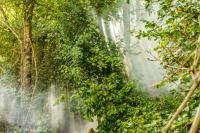
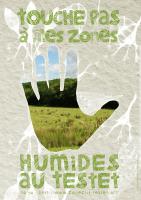


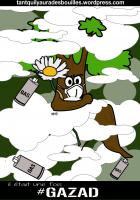

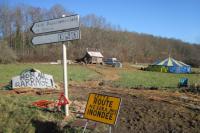
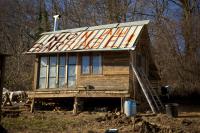
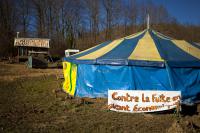
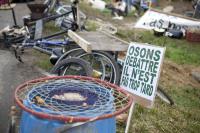
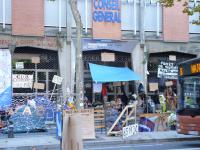
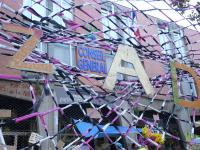

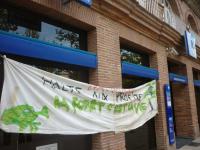
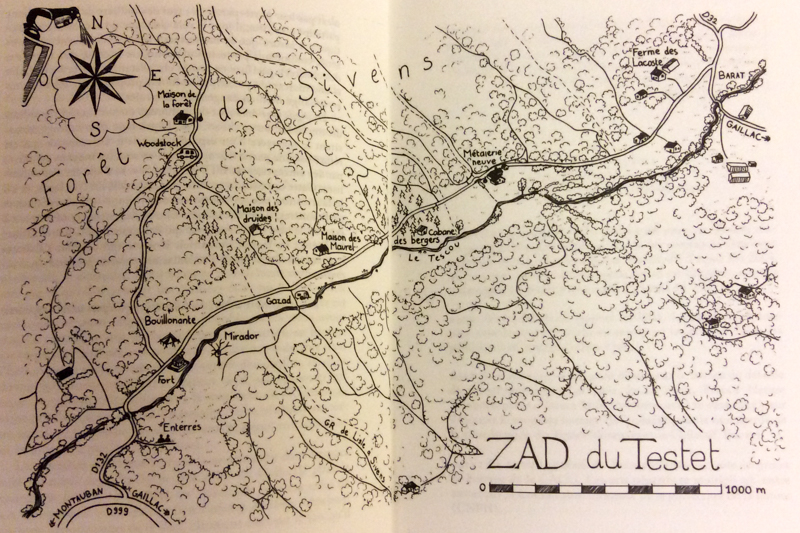


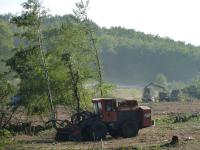
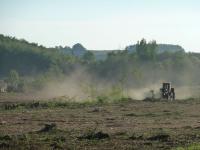
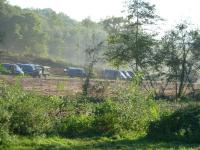
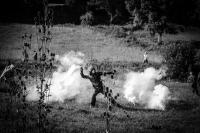
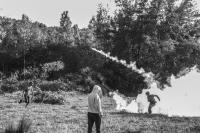
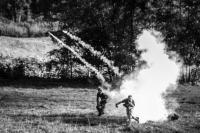
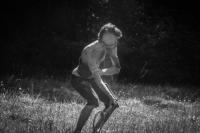

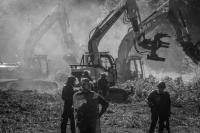
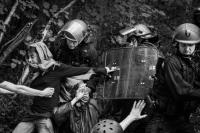

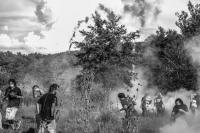



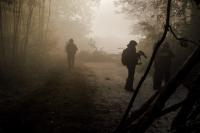
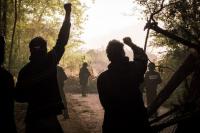
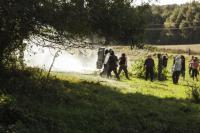

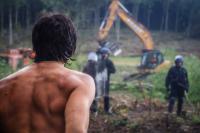
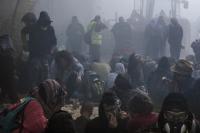
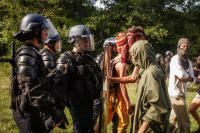
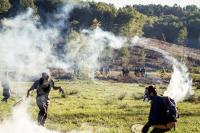

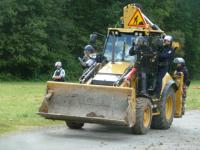

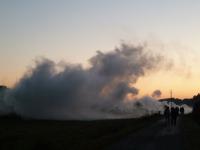
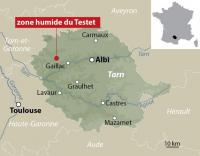

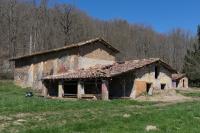
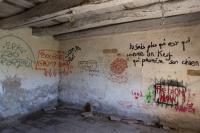
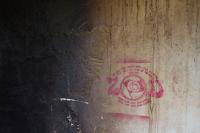
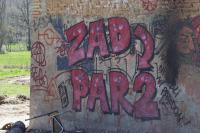

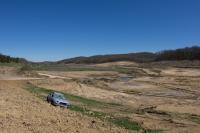
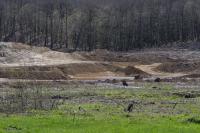
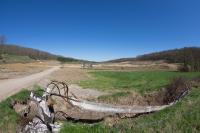
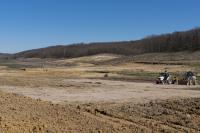
C’est le printemps...
In the meantime, Le Métairie has been walled in...
...but the resistance is still there!
Bouilles Hebdo du 18 au 24 mai
Bouilles Hebdo du 25 au 31 mai
Documentation about the militias in Tarn
Dans le Tarn, des milices fascisantes au service des notables locaux et de l'ordre dominant
témoignage collectif d'occupants et de sympathisants de la ZAD du Testet (PDF)